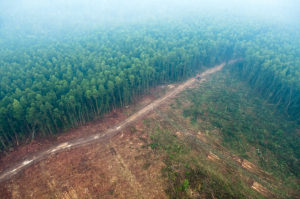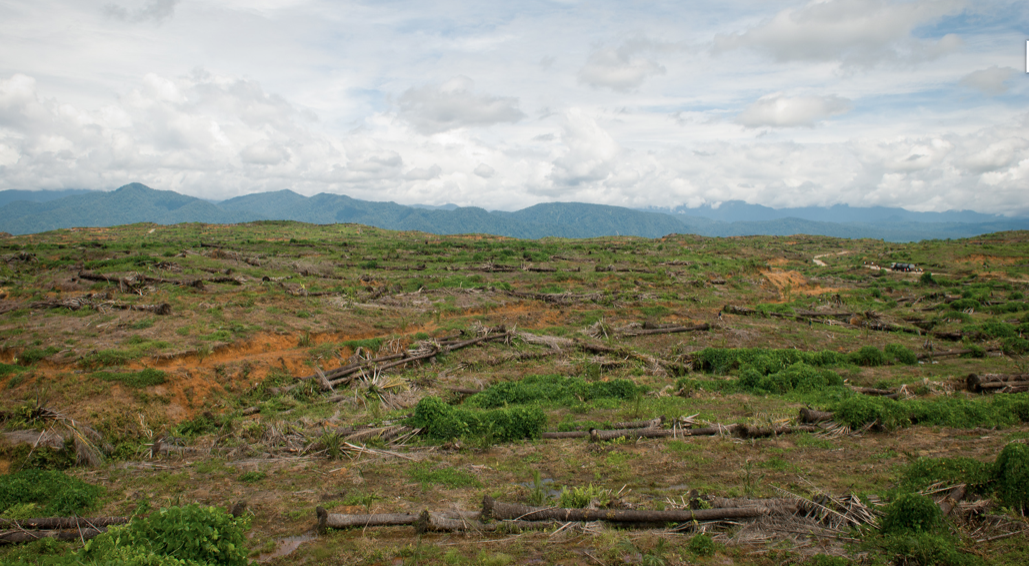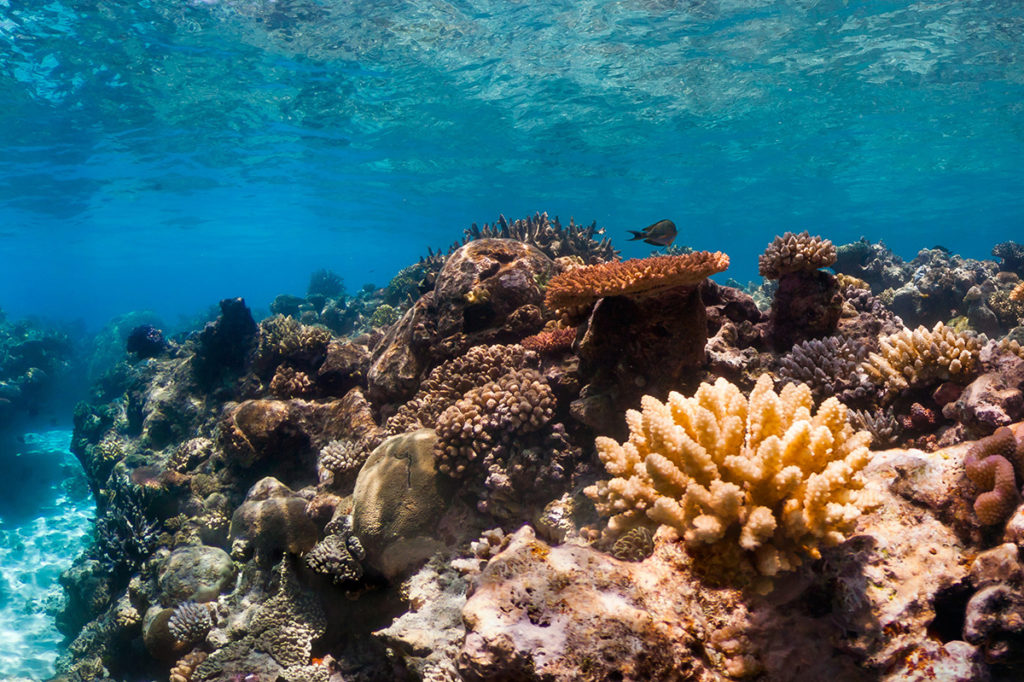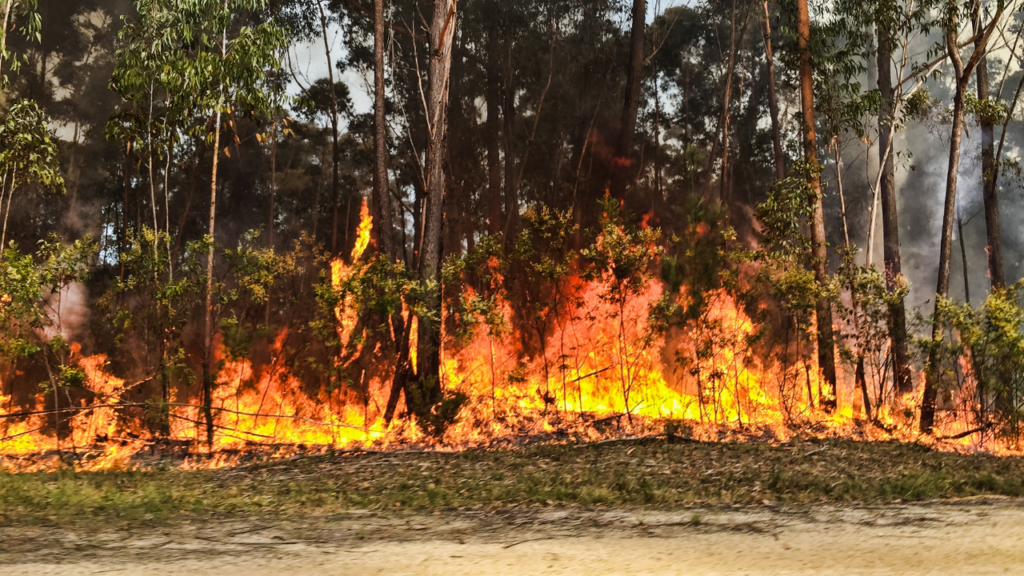Deforestation and the carbon cycle
Forests store large amounts of carbon. Trees and other plants absorb carbon dioxide from the atmosphere as they grow. This is converted into carbon and stored in the plant’s branches, leaves, trunks, roots and in the soil.
When forests are cleared or burnt, stored carbon is released into the atmosphere, mainly as carbon dioxide. Averaged over 2015—2017, global loss of tropical forests contributed about 4.8 billion tonnes of carbon dioxide per year (or about 8-10% of annual human emissions of carbon dioxide).
Whilst forests are important carbon sinks, meaning they draw down carbon dioxide from the atmosphere, the carbon stored in these sinks is part of an active, relatively quick carbon cycle. As living things (including trees) die and decay, the carbon that they once stored is released back into the atmosphere.
By contrast, carbon stored underground in the form of fossil fuels such as coal, oil and gas, is much more stable, and is part of a much slower carbon cycle. Without the influence of humans burning these fossil fuels for energy, this carbon would be unlikely to reach the atmosphere. When fossil fuels are burned, carbon from dead and decayed plants, animals and phytoplankton that lived hundreds of millions of years ago (before dinosaurs existed), is released into the atmosphere in the form of carbon dioxide.

Haze from forest fires blankets an area of deforestation. Image: CIFOR (CC BY-NC-ND 2.0)
Deforestation and climate change
Burning fossil fuels, in combination with destruction of carbon sinks due to deforestation and other activities, has contributed to more and more carbon dioxide building up in the atmosphere – more than can be absorbed from existing carbon sinks such as forests. The build-up of carbon dioxide in the atmosphere is driving global warming, as it traps heat in the lower atmosphere. Carbon dioxide levels are now at their highest in human history.
It is not effective to “offset” greenhouse gas pollution from burning fossil fuels by storing carbon in forests. This is because fossil fuels are pumping much more carbon dioxide into the atmosphere than existing forests can absorb. At the same time, carbon stores in forests and other natural carbon sinks will become increasingly unstable as climate change progresses. Droughts, tropical storms, heatwaves and fire weather are increasing in severity and frequency because of climate change. This will continue to result in increases in forest losses, contributing to more and more carbon dioxide being released into the atmosphere. Risks are significantly reduced but not avoided by keeping the rise in global temperature well below 2°C.
The future
Protecting natural ecosystems and sustainably managing and re-establishing forests are important ways to reduce greenhouse gas emissions and slow down temperature rise in the short term by drawing down carbon dioxide from the atmosphere. At the same time, we must deeply and rapidly reduce global greenhouse gas emissions levels from fossil fuels – coal, oil and gas. If we do only the former and not the latter, we risk transforming more and more of our carbon sinks into carbon sources as climate change progresses.
–
To learn more about this topic, read our report:










